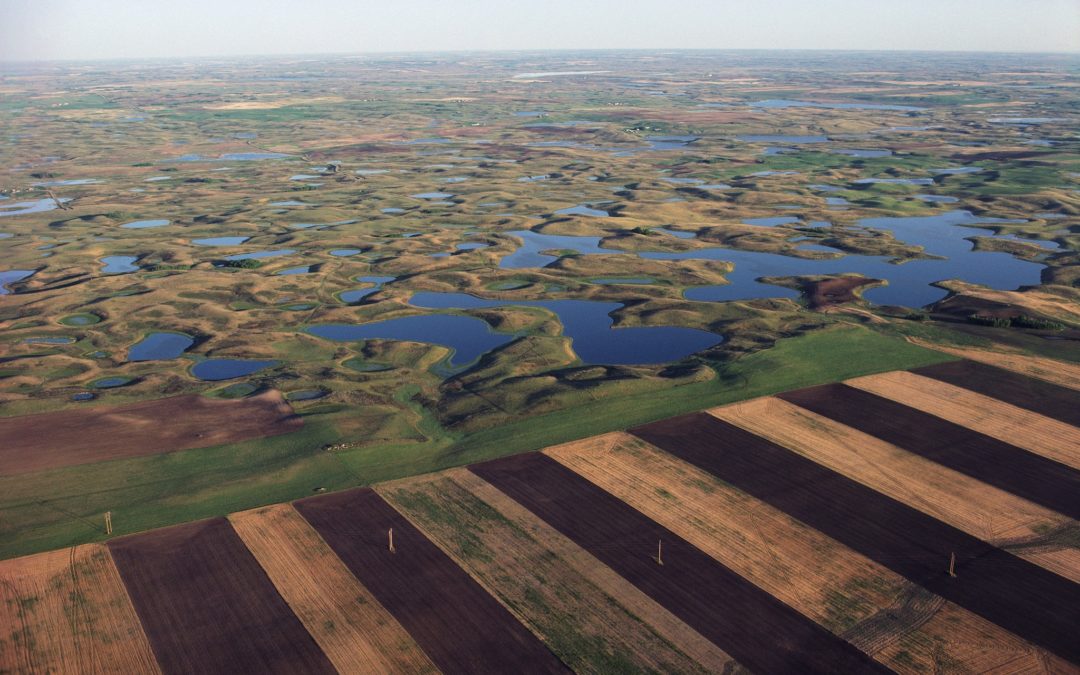SOURCE: New York Times
DATE: January 22, 2020
SNIP: The Trump administration on Thursday finalized a rule to strip away environmental protections for streams, wetlands and groundwater, handing a victory to farmers, fossil fuel producers and real estate developers who said Obama-era rules had shackled them with onerous and unnecessary burdens.
From Day 1 of his administration, President Trump vowed to repeal President Barack Obama’s “Waters of the United States” regulation, which had frustrated rural landowners. His new rule, which will be implemented in about 60 days, is the latest step in the Trump administration’s push to repeal or weaken nearly 100 environmental rules and laws, loosening or eliminating rules on climate change, clean air, chemical pollution, coal mining, oil drilling and endangered species protections.
Although Mr. Trump frequently speaks of his desire for the United States to have “crystal-clean water,” he has called his predecessor’s signature clean-water regulation “horrible,” “destructive” and “one of the worst examples of federal” overreach.
“I terminated one of the most ridiculous regulations of all: the last administration’s disastrous Waters of the United States rule,” he told the American Farm Bureau Federation’s annual convention in Texas on Sunday, to rousing applause.
“That was a rule that basically took your property away from you,” added Mr. Trump, whose real estate holdings include more than a dozen golf courses. (Golf course developers were among the key opponents of the Obama rule and key backers of the new one.)
His administration had completed the first step of its demise in September with the rule’s repeal.
Mr. Trump’s replacement, called the “Navigable Waters Protection Rule,” finishes the process. It not only rolls back key portions of the 2015 rule that had guaranteed protections under the 1972 Clean Water Act to certain wetlands and streams that run intermittently or run temporarily underground, but also relieves landowners of the need to seek permits that the Environmental Protection Agency had considered on a case-by-case basis before the Obama rule.
It also gives President Trump a major policy achievement to bring to his political base while his impeachment trial continues.
“Farmers coalesced against the E.P.A. being able to come onto their land, and he’s delivering,” said Jessica Flanagain, a Republican strategist in Lincoln, Neb. “This is bigger news for agricultural producers than whatever is happening with the sideshow in D.C.,” she added.
The new water rule for the first time in decades allow landowners and property developers to dump pollutants such as pesticides and fertilizers directly into hundreds of thousands of waterways, and to destroy or fill in wetlands for construction projects.
“This will be the biggest loss of clean water protection the country has ever seen,” said Blan Holman, a lawyer specializing in federal water policy at the Southern Environmental Law Center. “This puts drinking water for millions of Americans at risk of contamination from unregulated pollution. This is not just undoing the Obama rule. This is stripping away protections that were put in place in the ’70s and ’80s that Americans have relied on for their health.”
The Obama rule protected about 60 percent of the nation’s waterways, including large bodies of water such as the Chesapeake Bay, Mississippi River and Puget Sound, and smaller headwaters, wetlands, seasonal streams and streams that run temporarily underground. It limited the discharge of pollutants such as fertilizers, pesticides and industrial chemicals into those waters.
The new rule, written by the E.P.A. and the Army Corps of Engineers, will retain federal protections of large bodies of water, as well as larger rivers and streams that flow into them and wetlands that lie adjacent to them. But it removes protections for many other waters, including wetlands that are not adjacent to large bodies of water, some seasonal streams that flow for only a portion of the year, “ephemeral” streams that only flow after rainstorms, and groundwater.
Legal experts say that Mr. Trump’s replacement rule would go further than simply repealing and replacing the 2015 Obama rule — it would also eliminate protections to smaller headwaters that have been implemented for decades under the 1972 Clean Water Act.
That could open millions of acres of pristine wetlands to pollution or destruction, and allow chemicals and other pollutants to be discharged into smaller headland waters that eventually drain into larger water bodies, experts in water management said. Wetlands play key roles in filtering surface water and protecting against floods, while also providing wildlife habitat.

